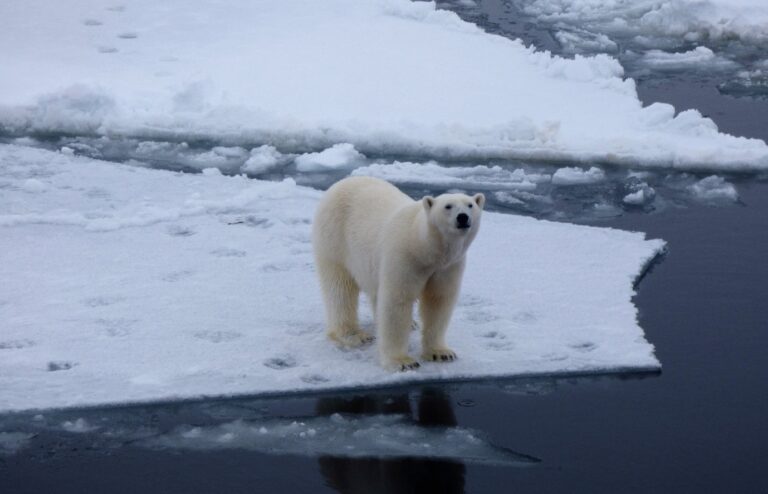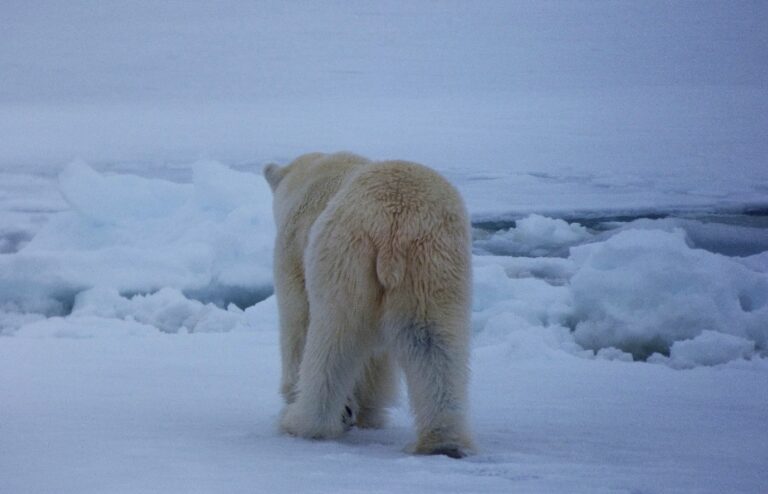Science at Sea: Environmental Studies in the Arctic, Part 1
Research and impact Student experience 6 January 2020
PhD student Emma Burns takes us along on her Arctic adventure to better understand the input of terrestrial nitrogen into the Arctic Ocean. On her first expedition, she encounters the midnight sun, a polar bear, and the formidable Megacorer.

In May 2018, I set sail for what was to be one of the best experiences of my life thus far. It all began when I started my PhD in the Department of Earth and Environmental Sciences back in 2017: the project aimed to better understand the input of terrestrial nitrogen into the Arctic Ocean and its potential for affecting the food web. Shortly after starting I found out I would be lucky enough to collect some of my own samples from the high Arctic on board the Royal Research Ship James Clark Ross. I immediately started preparations for the trip, beginning with a personal survival techniques course. Here, I learnt about survival equipment and principles that would help me if there was an accident leading to us having to abandon ship – a scary thought. Thankfully, we never needed to apply this knowledge. Once this was complete all we had left to do was prepare our route, organise the sampling strategy, check sea ice conditions and we would be on our way.
It took around three days for us to pass into the Arctic Circle where our work began, my job on board was to collect sediment samples from the seafloor. We did this using a big piece of kit called a Megacorer, it works by plunging an array of Perspex tubes into the seafloor which then closes off to maintain the integrity of the core as it is brought back up to the surface. Once back on deck these cores were sliced up and placed straight into a -80 degrees centigrade freezer in order to preserve the samples for our analysis back in Manchester.

Adjusting to life on board was relatively easy, apart from the phenomenon known as the ‘midnight sun’. During the summer months the high Arctic experiences 24 hour daylight because the sun never sets, the picture above was actually taken around ten o’clock at night. On the one hand this made it difficult to sleep, but on the other it helped when we had long night shifts working out on deck.

The highlight of my trip came around 4am on 20th May, we were visited by the epitome of Arctic wildlife. A large (presumably male) polar bear wandered up to our ship, most likely having smelt breakfast cooking in the kitchen. He first appeared in the distance and over the next three hours he came closer until there were only a few meters between him and the stern of the ship.


Once we had completed our science at sea we docked on the beautiful Svalbard, an archipelago to the east of Greenland. Here we adjusted to life back on land, after over a month of having to counteract the sway of the boat, solid ground was something of a novelty. I spent three further days on Svalbard before heading back to Manchester where the real work began.

You can follow Emma on Twitter @ArcticBurns
In part 2, Emma will tell us about her return to the Arctic in September 2019 with the British Antarctic Survey.
Arcticclimate changeEnvironmental Studiesfood webmegacorerNitrogenpolar bearresearch shipSvalbardwildlife




Leave a Reply